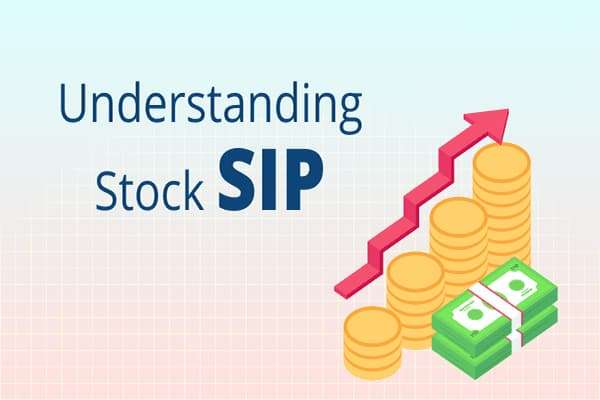Mutual Fund & SIP Guidance
Mutual Fund & SIP Guidance
Investing in mutual funds is a smart way to grow wealth over time, especially for those who prefer a diversified and professionally managed portfolio. Mutual funds pool money from various investors to invest in a mix of assets such as stocks, bonds, or a combination of both, depending on the fund’s objective. This allows investors to access a broader range of investments with relatively lower risk compared to direct stock investing. A Systematic Investment Plan (SIP) is a disciplined method of investing in mutual funds. SIPs allow investors to invest a fixed amount regularly—monthly or quarterly—rather than making a lump-sum investment. This not only instills financial discipline but also enables rupee cost averaging, which can reduce the impact of market volatility.

Short Term Capital Gains Tax (STCG)
Short-term capital gains are the profits earned from selling or transferring assets that have been held for a relatively short period. As per the Union Budget 2024, the tax rate on short-term capital gains for certain financial assets has been increased from 15% to 20%. This revision underscores the need for investors to stay informed about tax laws that directly affect their investment returns.
Whether you’re investing in mutual funds, stocks, or other market-linked instruments, knowing how short-term capital gains are taxed is essential for effective financial planning. The higher tax rate can reduce your net gains, especially if you’re frequently buying and selling assets within a short time frame.
With these changes, it becomes even more important to evaluate the holding period and tax efficiency of your investments. Understanding STCG and aligning your investment strategy accordingly can help minimize tax liabilities and enhance overall returns.
This guide will help you explore the details of short-term capital gains, including applicable tax rates, calculation methods, and smart tax-saving strategies to optimize your investment outcomes in light of the new tax rules.
What is Short Term Capital Gains (STCG)?
Short-term capital gains (STCG) tax applies to the profit earned from selling a capital asset held for a short duration—typically less than one year. The gain is calculated as the difference between the asset’s sale price and its original purchase price. Since short-term investments are often seen as a means of generating quick income, STCG is usually taxed at a higher rate compared to long-term capital gains (LTCG).
The applicable STCG tax rate depends on the type of asset and prevailing tax regulations. For instance, as of July 23, 2024, gains from the sale of listed equity shares, equity-oriented mutual funds, and units of business trusts are taxed at a concessional rate of 20%. However, if such assets are sold before this date in the financial year 2024–25, the earlier rate of 15% still applies.
For other types of assets, short-term capital gains are taxed according to the individual’s income tax slab rate. This makes it important for investors to be aware of timing and asset classification, as both factors significantly influence the final tax liability on short-term gains.
Short Term Capital Gains Tax Rate for FY 2024-25
The short-term capital gains tax rates vary depending on the type of asset being sold. For the financial year 2024–25, here are the applicable STCG tax rates across different asset categories:
| Asset Type | STCG Tax Rate |
|---|---|
| Listed equity shares | 20% |
| Equity-oriented mutual fund units | 20% |
| Unlisted equity shares (including foreign company shares) | Taxed as per the individual’s income tax slab |
| Immovable property (e.g., residential/commercial buildings, land) | Taxed as per the individual’s income tax slab |
| Movable property (e.g., gold, silver, artwork, antiques) | Taxed as per the individual’s income tax slab |
Short Term Capital Gains Tax on Equity & Non-Equity Assets
Equity-oriented assets—such as individual stocks and equity mutual funds—are taxed at a flat short-term capital gains (STCG) rate of 20% if sold within 12 months of purchase. This rate is fixed and applies regardless of your income tax bracket. For example, if you earn a profit of ₹50,000 by selling equity shares after 9 months, you would incur a tax liability of ₹10,000 (20% of ₹50,000) as STCG.
In contrast, non-equity assets like debt mutual funds, bonds, gold, and other physical assets follow a different tax structure. Any short-term gains from these assets are added to your total taxable income and taxed according to your individual income tax slab. This means your effective STCG tax rate on non-equity assets will vary based on your overall earnings during the financial year.
How to Calculate Short Term Capital Gains Tax?
To calculate short-term capital gains, you need to determine the difference between the sale price and the purchase price of the asset, while factoring in any transaction-related expenses. Here’s a simple breakdown of the formula used:
- STCG Calculation Formula:
Net Sale Proceeds = Sale Price – Selling Expenses (brokerage, stamp duty, etc.) - Cost of Acquisition = Purchase Price + Purchase-related Expenses (if any)
- STCG = Net Sale Proceeds – Cost of Acquisition STCG Calculation Example
Scenario:
You bought 100 shares of ABC Ltd. on January 1, 2024, at ₹100 per share.
You sold them on June 1, 2024, at ₹125 per share.
Brokerage and transaction charges amounted to ₹2,000.
No tax exemptions are available under Sections 54B or 54D. - Step-by-Step Calculation:
- Total Sale Value: 100 × ₹125 = ₹12,500
- Less: Expenses (brokerage, etc.): ₹2,000
- Net Sale Proceeds: ₹12,500 – ₹2,000 = ₹10,500
- Purchase Price: 100 × ₹100 = ₹10,000
Total Cost of Acquisition: ₹10,000 (assuming no extra acquisition costs)
STCG: ₹10,500 – ₹10,000 = ₹500
Tax Implication
Since the asset is equity-oriented and held for less than 12 months, the STCG is taxed at 20% (as per FY 2024–25).
Tax Payable: 20% of ₹500 = ₹100
Thus, you owe ₹100 in short-term capital gains tax.
